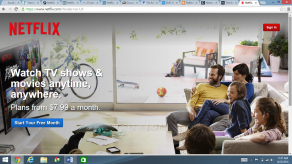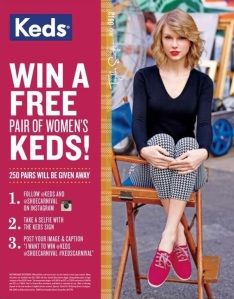The Urgency of Media Convergence
I want to start off this week’s topic, media convergence, with a personal anecdote.
I have begun the post-graduate job search. Using my laptop, I began a simple search on Google by typing in the job field and the location. One job came up that sounded like a potential fit. I clicked the company name which brought me to a page that showed it was owned by a larger company. It was at this point that I grabbed my iPhone next to me, pulled up the Google app, and typed in the name of the larger company to search for more information.
To reiterate: I was sitting in front of my laptop, but chose to grab my cell phone and click on the Google app.
Why didn’t I just open another tab and go to Google on my laptop? I’ll admit that I have my lazy moments, but I assure you I am not so lazy that flipping through tabs would be too much work for me. The reality is that I have almost been conditioned to do a quick search on my phone.
Google is the most popular search engine on the web, but people are increasingly turning to apps. Clearly aware of this transition, Google embraces convergence by promoting their app on their mobile site.
A Wired article shows the decline of the web and explains apps are “less about the searching and more about the getting.” The screen is right there at the push of a button. Facebook, Twitter, Amazon, IMDB, and other popular websites all launched apps because of the demand for simple, convenient information.
Switching to apps for convenient information isn’t the only example of media convergence.
Engineers and scientists are talking about “Big Data.” The word big does not even begin to do it justice. Big Data actually describes an enormous amount of digital data. In 2011 1.8 zettabytes of data were created. This amount is double that of “7 billion people on Earth…continually tweeted for one century”
People are creating data every day and digital media is increasingly popular. Another doubling amount is the number of Emmy nominations Netflix received this year. Netflix series received a total amount of 31 nominations combined, an increase from 14 total nominations last year. The shows nominated have never been on television cable networks, rather they are all original series on Netflix’s live streaming. People are watching Netflix on their SMART TV’s, iPads, and video gaming consoles. They can watch Netflix at home, at the airport, at a restaurant, etc. In fact, Nielsen is now measuring television through gaming consoles and broadband connections. Future measurements will most likely include apps on iPads. Digital television is one of the largest front runners in media convergence and it will only continue to grow.
People may forget that Netflix was first enticing because of its DVD-by-mail service. A customer could choose from any movie or season of a show, have the DVD delivered, and keep it as long as necessary. Since 2011, the DVD service has lost “half of its subscribers.” They made changes and amplified the advertising for their live streaming so much that the home screen for Netflix.com only mentions live-streaming. In 2013, 63% of Americans used the live-streaming feature. Overall, there is an increase in live-streaming users and a decrease in DVD-by-mail users. People are looking for instant gratification in entertainment.
Television networks such as ABC, NBC, and even Showtime are streaming their popular shows on Netflix. When a new season of a show is coming out, these networks know that consumers will most likely binge-watch older episodes in order to catch up in time for the premiere. Shows that had successful runs on cable can also be re-watched on Netflix, causing them to be more popular than ever. NBC’s Friday Night Lights ended in 2011, but every season is currently available on Netflix. People are still watching this show and various Facebook pages and Twitter accounts have been created in honor of the show and its characters. To take this a step further, Arrested Development was cancelled on cable television in 2006, but its three seasons were streamed on Netflix. The popularity and faithful viewership actually allowed the show to be brought back for a fourth season in 2013. Netflix is a prime example of how media convergence keeps people talking about shows that would otherwise be irrelevant. Television networks who do not provide online streaming of their shows will suffer from lack of consistent viewers.
In addition to the entertainment industry, retailers have also merged their media outlets to keep connecting with consumers. One example is how Shoe Carnival, a shoe chain of almost 400 stores nationwide, has changed their approach with advertising over the past 3 years. In the past, Shoe Carnival would place an ad insert in the newspaper. Today, inserts can be found in existing newspapers, fliers in the mail, e-mail blasts, third-party websites created for hosting ads, and social media. The combination of both paper and electronic ads has allowed Shoe Carnival to reach thousands of consumers. The company has an understanding of what its consumers want: quick and convenient information for how to save when shopping in their stores.
A specific example of the company staying relevant is its most recent back-to-school promotion. In an effort to reach the youthful target customer for Keds merchandise, Shoe Carnival and Keds selected social media as the main outlet to reach these consumers. Customers were able to take “selfies” with a cardboard cutout of Keds spokesperson Taylor Swift in every Shoe Carnival store. These customers were then encouraged to post their selfies on Instagram with the hashtag #kedscarnival in order to be eligible to win a free pair of Keds. Over 1,000 posts were made, and Keds sales for the time frame were over double from the previous year.
Other companies are not as ready to jump on media convergence platform, and they are suffering the consequences. The New York Times has been crushed by digital papers that are savvier with attraction to readers. The Times may post a relevant article, but it is constantly overshadowed by “amusing” and informative articles. Buzzfeed and The Huffington Post are both digital news sources that have a strong following, particularly because of the sharing feature on social media. Their articles are oftentimes the first news sources a target audience looks to for information because they are quick, smart, and enjoyable to read. The Times simply isn’t giving consumers what they want, and they will lose much of their readership if they continue to ignore their problems.
Businesses willing to converge in digital media will be successful. Digital media keeps products and companies relevant to a wider audience. Those who are trying to stick to the “but we’ve always done it this way” approach and avoid media convergence will only fall behind.



You make an excellent comment about business failing behind if they do not at least try to use digital media.
Often, people are uncomfortable with change, but, eventually grow to love it.
LikeLike
First of all, the title completely grabbed me, great headline! I can relate to pulling out my phone for a Google search at any time during the day. If I am watching a movie and can’t remember what other movie an actor was in, I Google it. If I am watching Food Network and see Paula Deen or the Pioneer Woman cooking something delicious, I’ll Google the recipe. The need to know information instantly is so relevant to consumers today, waiting is a thing of the past.
Also, I had not considered Netflix when thinking of media convergence but it makes complete sense. Consumers do not want to sit through commercials, they don’t want to flip through channels looking for something interesting, they want to search, browse, and find exactly what they want, when they want it. Also, with such busy lives, consumers do not want to miss out on the latest episodes of their favorite shows. Again, why wait? I believe other tools similar to Apple TV will be popular for this purpose as well.
I think we will continue to see a lot of social media campaigns with consumer participation and marketing across different types of media like television and print advertisements. Using social media is not as free as it used to be with sponsored posts and the addition of Facebook Pages, which does not show updates in news feeds unless the page is frequently visited. If you were to post a picture of a necklace on Instagram from a boutique in Troy and tag them, I would likely go to their page to see what other items they have, then check out their brick and mortar location later that week. When one person shares something on their personal feed, they are likely sharing that information with friends that have similar tastes, driving popularity for that business without lifting a finger. Those that choose to not participate in social media are losing a lot of ground to other brands that do engage their fans. Another great brand like Shoe Carnival winning in the social media marketing game is Chobani. Why stage photo shoots when customers post artful and creative shots of greek yogurt on their personal Instagram accounts? So, not only do they run great commercials with yummy shots, you can head to their Instagram page while watching television and see what others have created with their products. And here I am watching television again while simultaneously pulling my phone out to research the exact item on my screen, I see a pattern here!
Have a great weekend, we’re almost halfway through the term!
LikeLike